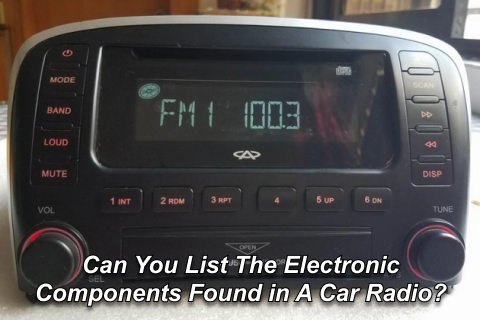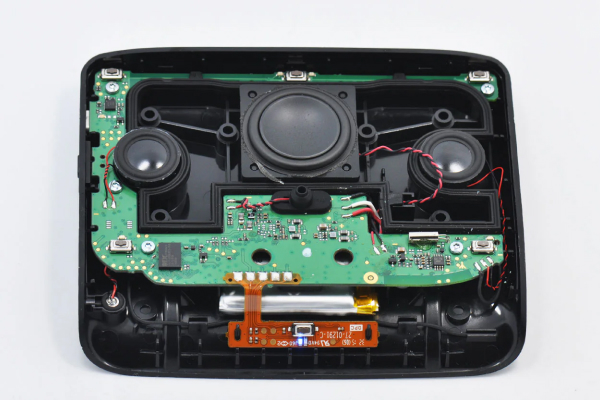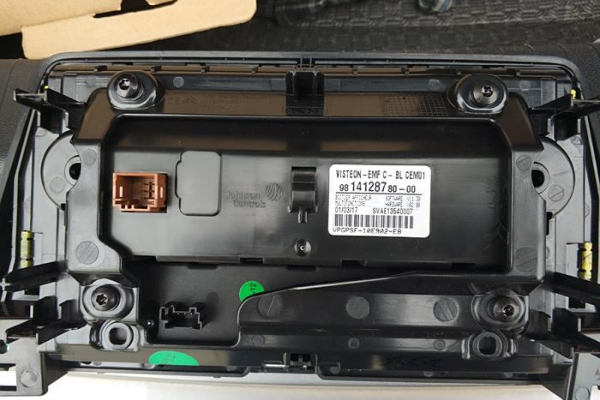
Can You List The Electronic Components Found in A Car Radio?
In the modern vehicle, the car radio is more than just a device for catching the morning news or jamming to your favorite tunes. It's a complex piece of electronic engineering, a symphony of components working in harmony to provide entertainment, information, and connectivity. Whether you're a tech enthusiast, a DIY repair buff, or simply curious, understanding the components that make up your double din radio android auto can be both enlightening and useful. Let's break down the key electronic components you'll find in the dashboard's musical maestro.
1. Head Unit: The Conductor
The best android head unit, often referred to as the car stereo or radio, is the central control interface for your vehicle's audio system. It includes:
LCD Display: Displays information such as radio frequency, track names, and system settings.
Microcontroller: The brain of the head unit, which processes user inputs and controls the system.
Memory Chips: Store settings, radio presets, and sometimes navigation data.
Tuner: Receives radio signals and demodulates them into audio signals.
Amplifier Circuits: Boost the audio signal before it's sent to the speakers.
CD/DVD Player: For vehicles that still include these, laser diodes and sensors read the discs.
Auxiliary Ports: Allow connection of external devices like MP3 players.
USB Ports: For playing media from flash drives or charging devices.
Bluetooth Module: Enables wireless connectivity for music streaming and hands-free calls.

2. Amplifier: The Powerhouse
Separate from the head unit, some car audio multimedia systems include an external amplifier for increased power and better sound quality. It contains:
Capacitors: Store and release electricity to power the amplifier.
Transistors: Amplify the audio signal by controlling the power distributed to the speakers.
Heat Sinks: Dissipate heat generated by the amplification process.
3. Speakers: The Performers
Speakers transform electrical signals into the sound we can hear and enjoy. They consist of:
Voice Coils: Create sound waves through electromagnetic principles.
Cones: Move air to produce sound, made from materials like paper, plastic, or composites.
Magnets: Work with the voice coils to create a magnetic field that moves the speaker cone.
Crossovers: Direct specific frequencies to the appropriate speakers (tweeters for highs, woofers for lows).

4. Antenna: The Signal Seeker
The antenna captures radio waves and sends them to the tuner. It includes:
Mast: The visible part of the antenna, which can be fixed, telescopic, or embedded.
Cable: Connects the mast to the android auto head unit wireless.
Amplifier: Some antennas have built-in amplifiers to boost signal strength.
5. Wiring Harness: The Nervous System
The wiring harness is a bundle of wires and connectors that distribute power and signals throughout the audio system. It includes:
Power Wires: Deliver power from the vehicle’s battery and alternator.
Speaker Wires: Carry audio signals from the head unit or amplifier to the speakers.
Ground Wire: Completes the circuit and reduces noise.
6. Data Buses: The Communicators
Modern vehicles use data buses to allow electronic components to communicate with each other. They include:
CAN Bus: A robust vehicle bus standard designed to allow microcontrollers and devices to communicate with each other without a host computer.
MOST Bus: A high-speed multimedia network technology optimized for use in cars.
7. Miscellaneous Components:
Potentiometers: Control volume and other audio adjustments.
Switches and Buttons: User interface for controlling the radio.
LEDs or Bulbs: Illuminate the head unit's display and buttons.
8.Conclusion
From the head unit to the humble wire, each component in a touchscreen bluetooth car radio plays a crucial role in delivering the soundtrack to your drive. Understanding these components not only satisfies curiosity but can also empower you to make informed decisions about upgrades, repairs, and maintenance. So next time you switch on your car radio, take a moment to appreciate the intricate electronic symphony that springs to life at the touch of a button.
